Amazon FBA Fees 2025
Download Amazon Seller Guide
This guide will help you get started, understand the basics of Amazon selling, and explain in simple words how it all works.

Amazon often changes Fulfillment by Amazon fees, and 2025 is not an exception. However, this year the changes are not as drastic as in the previous years.
In summary, Amazon is reducing inbound placement service fees for large bulky-size products by an average of $0.58 per unit to minimize shipment splits, effective January 15, 2025. New parent ASINs eligible for the FBA New Selection Program, shipped between December 1, 2024, and March 31, 2025, will be exempt from fees for the first 100 inbound units. Additionally, Amazon will expand New Seller Incentives and FBA New Selection programs with enhanced fee discounts for targeted growth segments, starting January 15, 2025.
Keep reading to find out what Amazon fees FBA sellers pay, the new FBA fulfillment and storage fees introduced by Amazon in 2025, and how to calculate your Amazon FBA fees.
What Are the Types of FBA Fees Amazon Sellers Pay?
.avif)
Fulfillment by Amazon (FBA) sellers pay four types of fees to Amazon:
- selling plan fees (monthly or per-unit fees for selling on the Amazon platform),
- referral fees (fees per unit sold),
- FBA fulfillment fees (fees for delivering products to Amazon customers),
- and storage fees (cost of storing goods in Amazon’s fulfillment centers).
Below, you will find all these types of fees explained, with the latest changes introduced by Amazon.
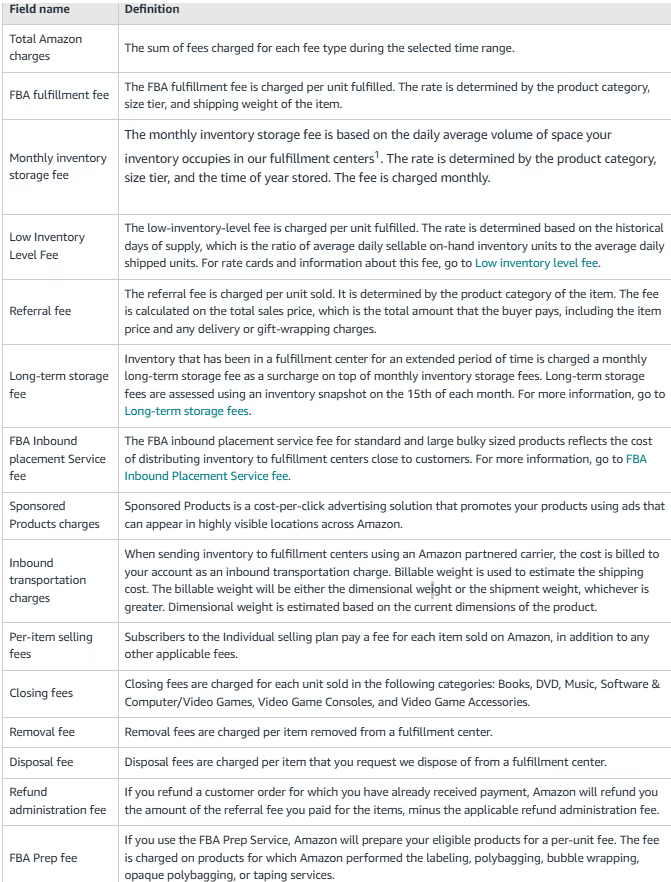
Related: FBA vs FBM: Which is Better for Amazon Sellers?
Selling Plan Fees
To start selling on Amazon, you must register an account and pay account fees. You can choose between Individual and Professional selling plans.
Individual plan
The Individual plan costs $0.99 per unit sold. This type of subscription is good for beginners or sellers who occasionally sell on Amazon. It is viable if you plan to sell less than 40 monthly units.
Professional plan
A Professional plan costs $39.99 per month, no matter how many units you sell. The Professional plan will save you money if you sell more than 40 monthly units. Additionally, you get access to many advanced features that help you sell on Amazon, including Buy Box eligibility, different tools and programs, and extended sales analytics.
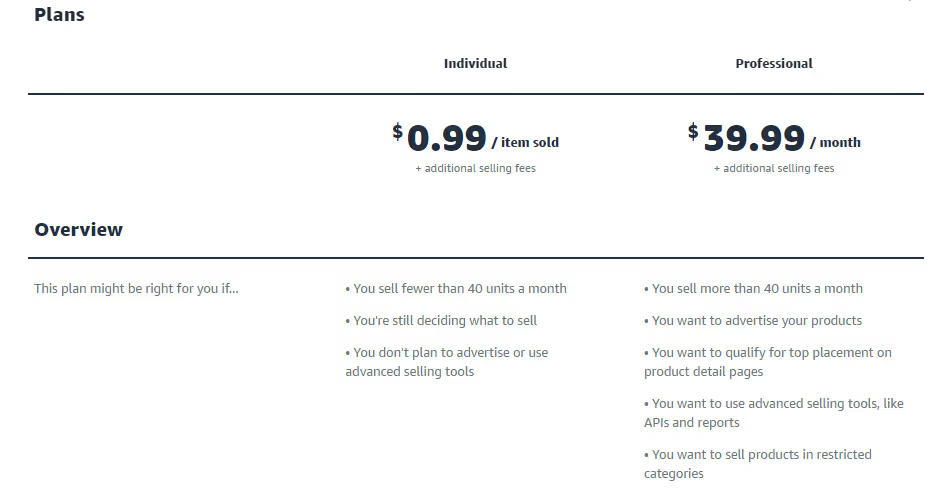
Related: Seller Assistant Extension Review
Seller Assistant — the Ultimate Tool for Amazon Online Arbitrage
How to Dropship on Amazon with Seller Assistant App
Referral Fees
All Amazon sellers pay a referral fee for each item they’ve sold. The referral fee is a percentage of the total sale price. The total sale price excludes tax but includes the product price, delivery costs, and gift wrapping charges.

The referral fee amount depends on the product category and product price. Most referral fees are between 8% and 15%. However, in specific categories, like Amazon Device Accessories, it is as high as 45%.
Also, from January 15, 2025, the referral fees for apparel products priced under $15 will go down from 17% to 5%. For products priced between $15 and $20, the referral fees will go down from 17% to 10%.
Referral fees are charged per unit when the order is shipped out to the customer.
Note. For orders with promotions, the referral fee is charged on the total sales price including the promotion.
Referral fee rates

Other Selling on Amazon Fees
Closing fees
If you sell in the categories of Books, DVDs, Music, Software & Computer/Video Games, Video Game Consoles, and Video Game Accessories, Amazon will charge you a closing fee of $1.80 per item sold.
High-volume listing fee
If you list more than 1.5 million SKUs monthly, Amazon charges a monthly high-volume listing fee of $0.001 per SKU.

Related: Best Tax Software for Amazon Sellers
Amazon FBA Calculator: Free Vs Paid
Refund administration fee
If you refund a buyer who has already paid for an order, Amazon refunds you the referral fee minus the refund administration fee. The fee is $5.00 or 20% of the referral fee, whichever is the lesser.

Related: Amazon Return Policy for Sellers - All You Need To Know
Amazon FBA Selling Tips for 2025
2025 Important Dates Amazon FBA: Key Dates for Amazon Sellers
Digital Services Fee
Starting from October 1, 2025, Amazon implemented a digital services fee to cover the costs associated with Digital Services Taxes (DST) introduced by certain countries, including Canada, the UK, France, Italy, and Spain. These taxes are levied by governments to tax digital services provided in their regions.
The DST rates vary, with 2% in the UK and 3% in Canada, France, Italy, and Spain. However, the actual DST costs for sellers can fluctuate based on several factors, such as the location of the business, the buyer's location, and other variables.

The digital services fee is a percentage added to the existing per-unit fees that sellers pay to Amazon. If your business is located in a country that has implemented a DST, or if you sell in an Amazon store in one of these countries, the fee will apply.
The fee is added to:
- Selling fees on Amazon
referral fees, fixed closing fees, variable closing fees, and fees for faster payouts.
- FBA fees (applicable to the UK and France)
This includes FBA fulfillment fees and shipping chargeback fees.
Amazon FBA Fulfillment Fees
Fulfillment by Amazon (Amazon FBA) fees are paid by sellers who use Amazon’s services to deliver orders to customers and store products in their fulfillment centers. The service includes picking and packing orders, shipping and handling, customer service, and product returns.
FBA fees are charged per unit when the order is shipped out to the customer.

Amazon FBA fees are calculated based on the weight, dimension, and size tier of the product and differ for apparel and non-apparel. The fulfillment fees for products that belong to the Dangerous goods (hazmat) category are higher.
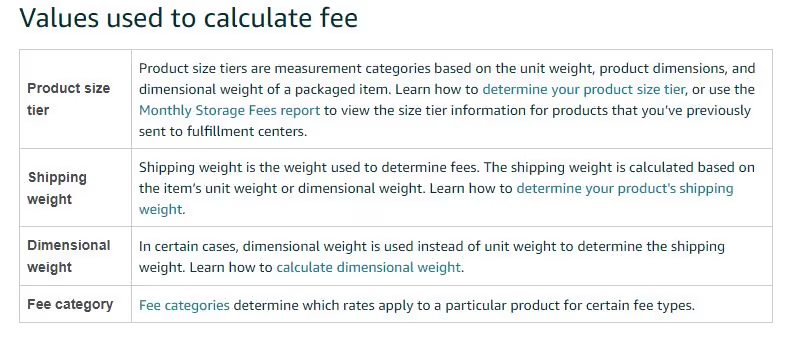
Related: The Most Important Amazon Seller Metrics for FBA Businesses
Amazon Profit Margin for Sellers: How to Achieve Healthy Margins
5 Tips to Calculate Amazon FBA Profit Accurately
Types of Amazon FBA fulfillment fees
- Order fulfillment fees;
- FBA inbound placement service fees;
- Low-inventory-level fees;
- Returns processing fees;
- Inbound defect fees.
Order fulfillment fees
Order fulfillment fees (previously called pick and pack fees) include picking and packing orders, shipping and handling, and customer service. The fees are charged per unit. The rate depends on the size tier and differs for apparel and non-apparel.
Amazon product size tiers
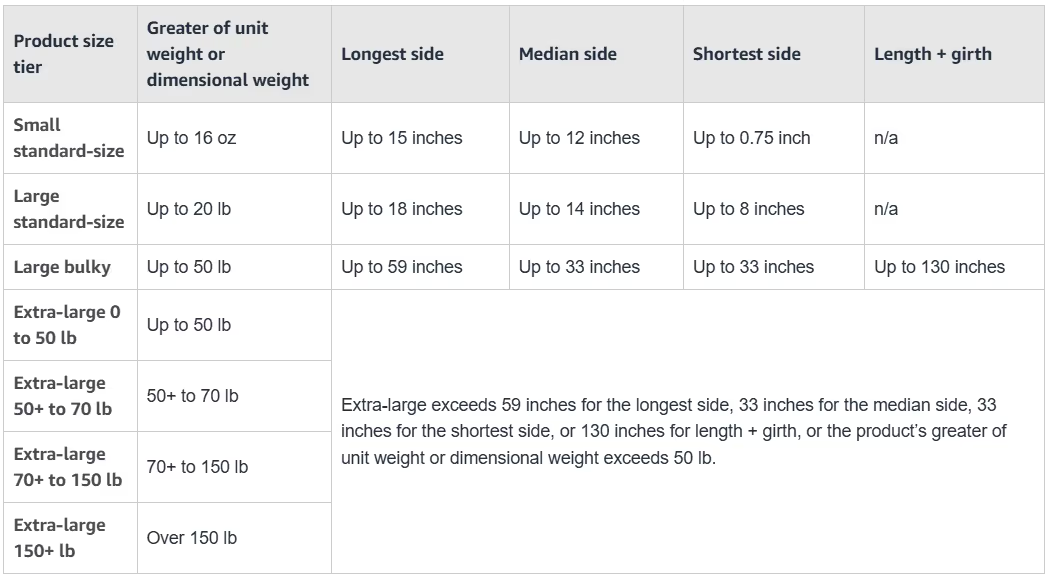
Non-apparel rates
Table 1. FBA fulfillment fees (excluding Apparel)
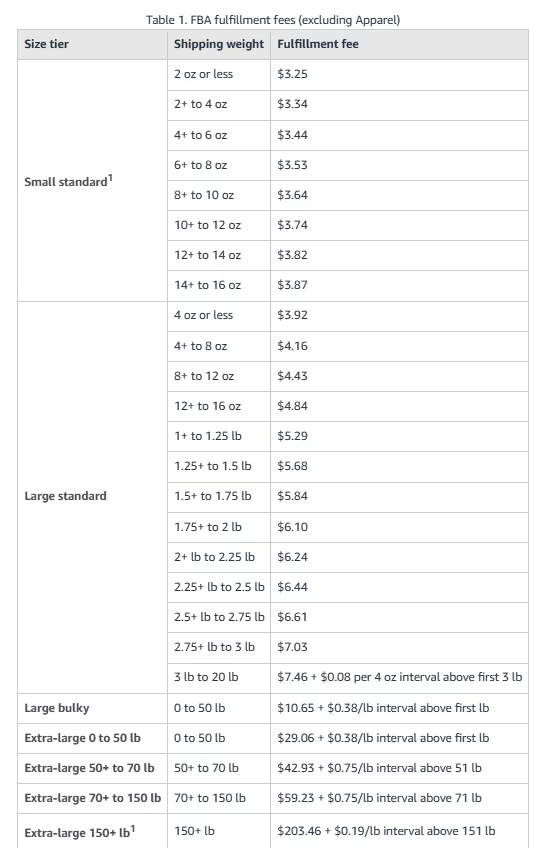
Apparel rates
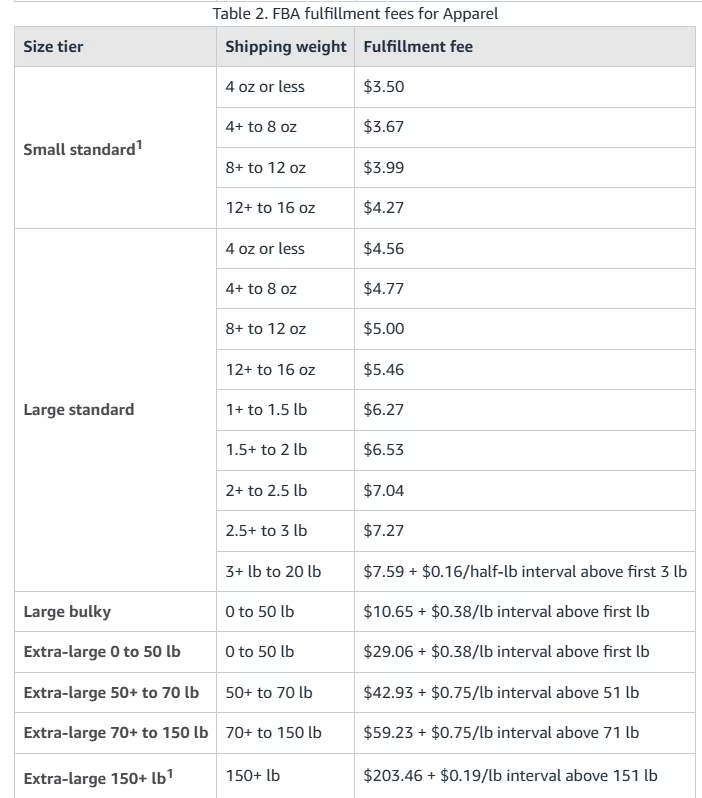
Dangerous goods rates

Related: What Is The Cart Abandonment And How To Decrease It?
What Is the Amazon Conversion Rate?
Amazon ACoS - All You Need To Know
Amazon Best Sellers Rank - Everything You Need to Know
Low-Price FBA
Products priced under $10 are charged according to Low-Price FBA rates that are $0.77 less than standard products. Delivery speeds for these products are the same as standard FBA.
Low-Price FBA rates
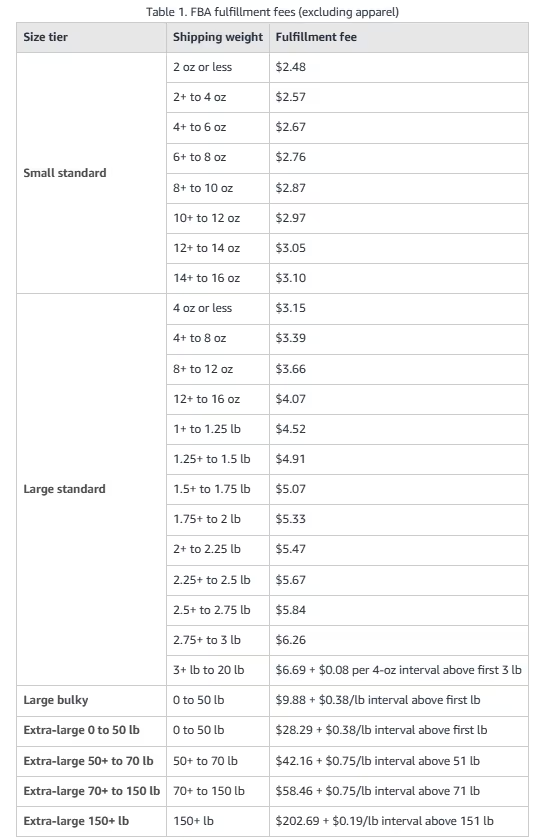
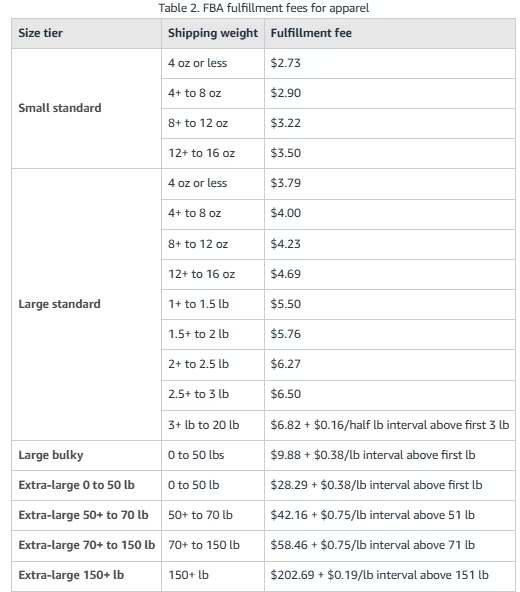
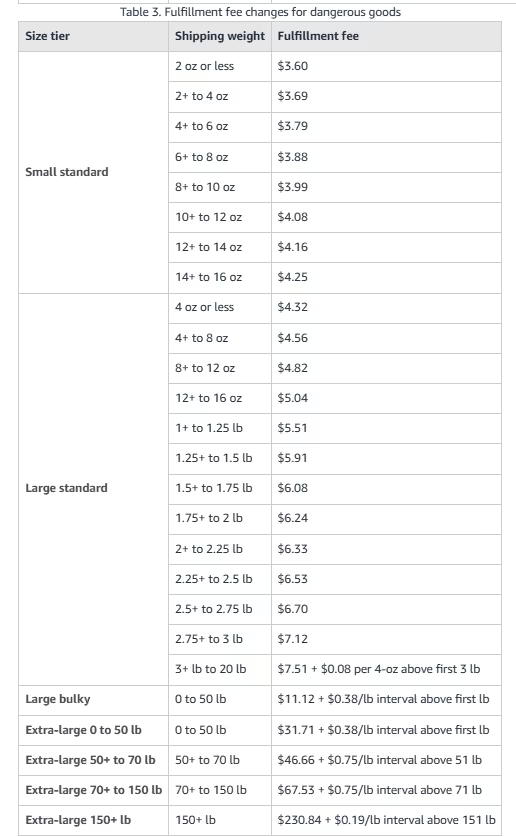
Related: Amazon Sellers Competitors Analysis: Guide
Best Product Ideas for Amazon FBA in 2025
How to Sell Used Items on Amazon?
5 Strategies To Increase Amazon FBA Sales
FBA inbound placement service fees
The FBA inbound placement service fee is charged for distributing inventory to specific Amazon fulfillment centers located close to customers. You can choose between the two options of the fee.
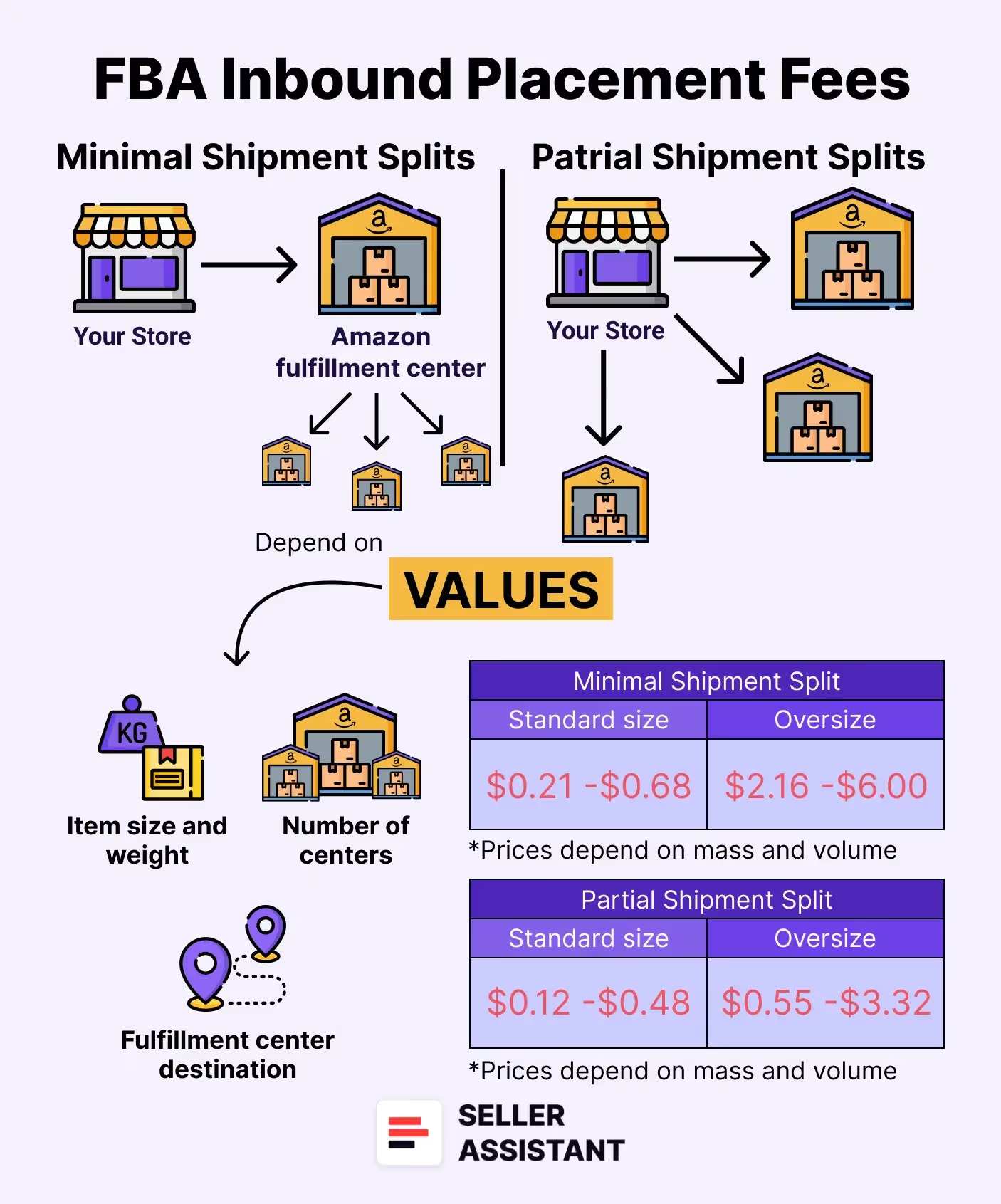
Types of FBA inbound placement service fees
- Minimal shipment splits: you send inventory to one fulfillment center, and Amazon distributes it for you for a fee;
- Partial (Amazon-optimized) shipment splits: you send your inventory to multiple Amazon fulfillment centers yourself for no fee.
Related: FBA Inbound Placement Service Fees
Free Amazon Automate Pricing Tool - Review and Pros & Cons
2025 Important Dates Amazon FBA: Key Dates for Amazon Sellers
FBA inbound placement service rates
From January 15, 2025 Amazon is reducing Inbound Placement Service Fees for large bulky-size products by an average of $0.58 per unit for shipments with minimal splits.
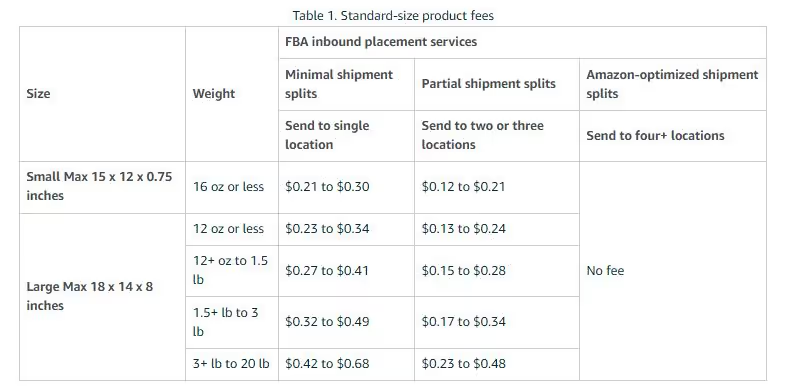

Note. Amazon canceled Inbound Placement Service Fees for new parent ASINs that qualify for the FBA New Selection program. This waiver applies to shipments created between December 1, 2024, and March 31, 2025, exempting the inbound placement fee for up to the first 100 in-bounded units per new parent ASIN.
Low-inventory-level fees
Low-inventory-level fee applies to the products that are consistently undersupplied to Amazon’s customers, and the inventory is low compared to demand. Amazon introduced the fee on April 1, 2025.
A low-inventory-level fee is charged if a product’s inventory level relative to historical demand is below 28 days.
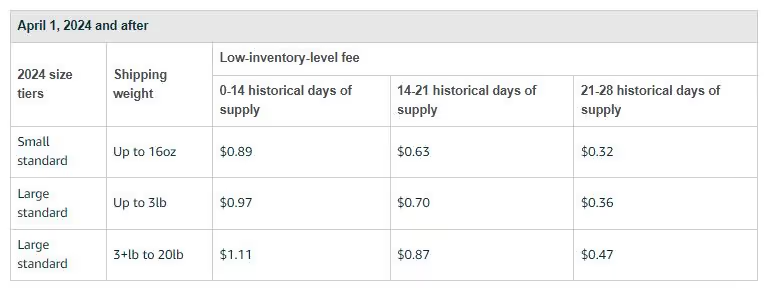
Returns processing fees
Returns processing fee is charged to products that have return rates exceeding a threshold in that product’s category. The return rate is calculated as a percentage of returns over a specific month and the subsequent two calendar months compared to your monthly shipped units.
The fee applies to all categories, excluding Apparel and Shoes. For Apparel and Shoes, a returns processing fee will be charged for each customer-returned unit.
Returns processing fee rates
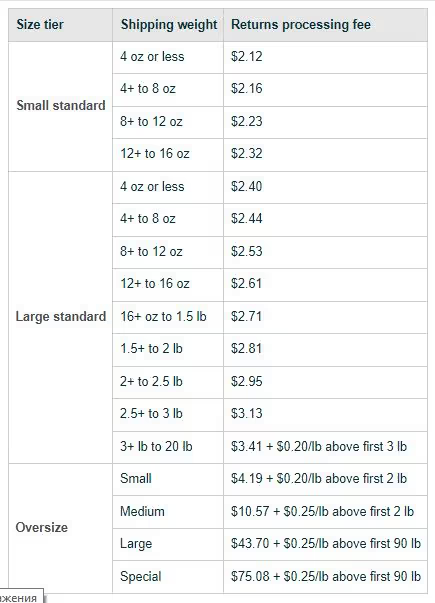
Related: Amazon FBA in 2025: Trends from 2023 and What We Predict for the New Year
5 Best Strategies To Drive External Traffic To Amazon Listings
Q1 Strategy: How to Effectively Get Ready for Amazon Q1 in 2025?
Inbound defect fees
If the shipments you send to Amazon’s fulfillment centers are not according to the FBA shipment requirements or differ from your shipping plan, Amazon will charge inbound defect fees for re-directing, receiving, and processing your shipment.
Inbound defect fee rates
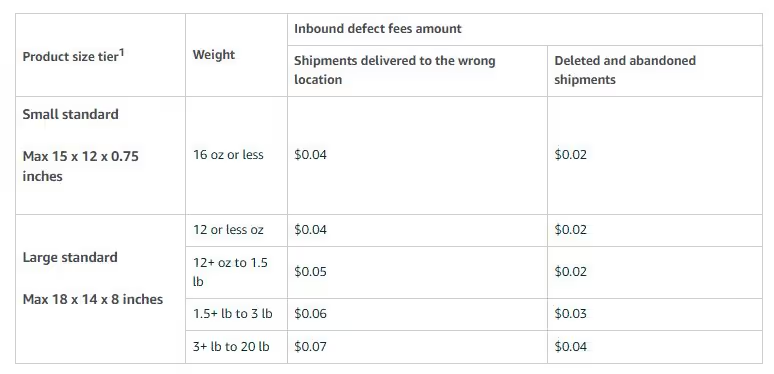
Amazon FBA Storage Fees
Amazon FBA storage fees are charged for storing your inventory in Amazon warehouses. Storage fees are based on the daily average volume of the space your inventory occupies in fulfillment centers. The rate is based on product type, size tier, and time of year.
The majority of storage fees are charged to your Amazon seller account monthly, typically between the 7th and 15th day of the month, in the month following when the fees were incurred.
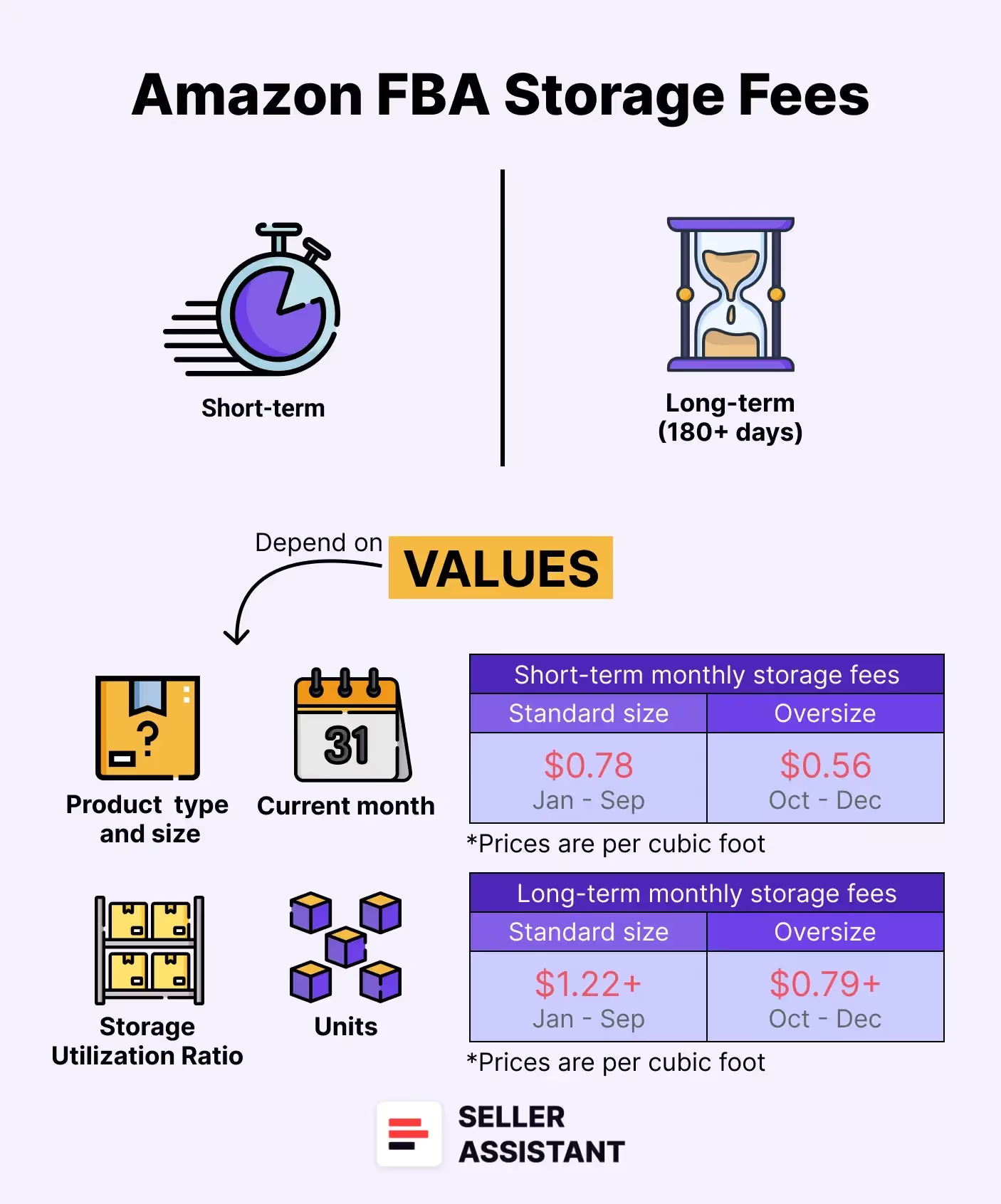
Related: How to Use an Amazon Prep Center to Enhance Your Business
Amazon FBA Prep Centers: All You Need To Know
Best FBA Prep Services for Amazon Sellers
Types of fees related to FBA product storage
- Amazon FBA monthly storage fees;
- Amazon Aged inventory surcharge;
- Inventory storage overage fees;
- FBA product removal and disposal fees.
Monthly inventory FBA storage fees
Monthly inventory FBA storage fees depend on how much space your products occupy in Amazon’s warehouse (average daily volume in cubic feet). The fee includes a basic storage fee and storage utilization surcharge.

Basic storage fees
The fee for FBA storage depends on the size of your products and the time of the year. The fees differ between January-September (off-peak fees) and October-December (peak fees). Furthermore, the storage fees for dangerous goods are higher compared to other products.
Related: Amazon Inventory Management
Amazon Restricted Products: Complete Guide for Sellers
How to Check Product Restrictions on Amazon?
Storage utilization surcharge
The Storage Utilization Surcharge fee applies to sellers on professional accounts who have a significant amount of standard-sized inventory occupying space during peak times.
The following sellers are subject to this fee
- Sellers on Professional account;
- Sellers who have shipped their first inventory to Amazon's fulfillment center 365 days ago;
- Sellers with an average daily inventory volume for the product size tier of more than 25 cubic feet;
- Sellers with a storage utilization ratio above 26 weeks.
Storage rates
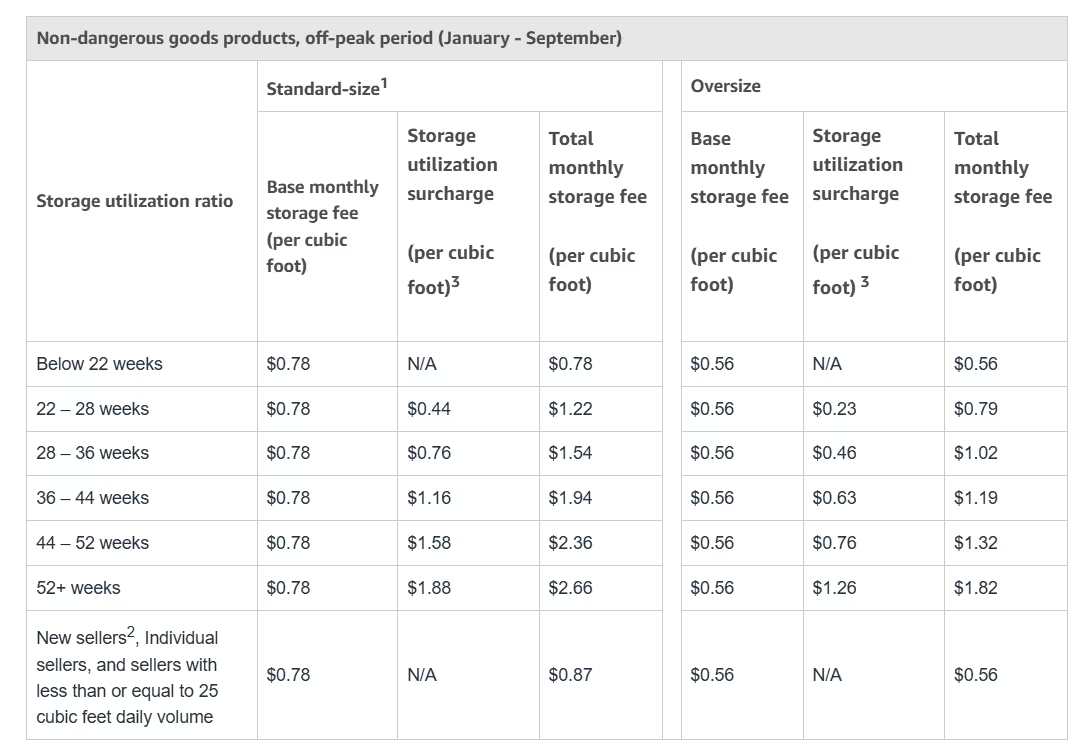
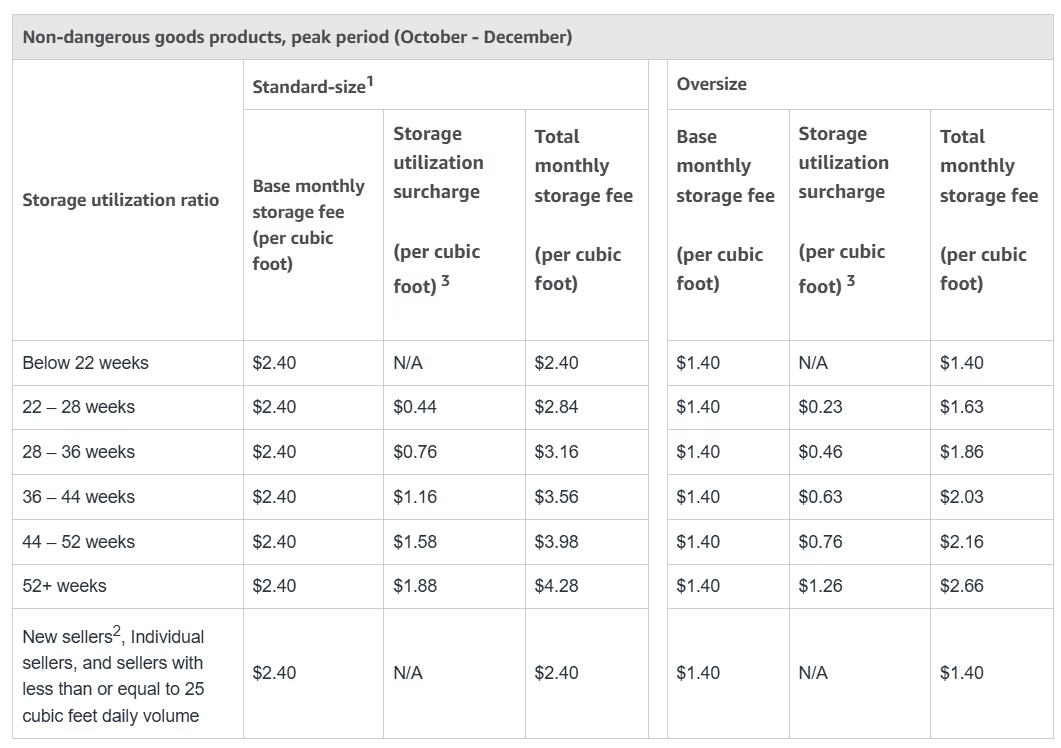

Amazon Aged inventory surcharge
If your inventory remains in Amazon’s fulfillment centers for more than 180 days, you will pay a long-term storage fee — Aged inventory surcharge. A fee is applied to inventory stored for more than six months (181 days or more).
The fee is based on a snapshot of your inventory taken on the 15th of each month. It's an additional charge on top of your regular monthly inventory storage fee. It is charged between the 18th and 22nd day of each month.
Aged inventory surcharge rates
Related: 13 Rules of OA Product Research Tested by Pain and Gain of Amazon Seller
13 Ways to Make Money on Amazon
Amazon Online Arbitrage: How to Make Money
Inventory storage overage fees
If your inventory exceeds your storage limits in any month, you will be charged an inventory storage overage fee in addition to monthly inventory storage fees and, if applicable, long-term storage fees.
The overage fee is based on how many days your storage limits are exceeded. It is charged after the end of the month in which the fees occurred.
Inventory storage overage fee rates
The overage fee is charged monthly at $10 per cubic foot based on the daily average volume for any space your inventory occupies in fulfillment centers beyond your storage limits.
FBA product removal and disposal fees
If your inventory stays in the Amazon fulfillment center for a long time and you want to avoid long-term storage fees, you can ship it back (remove) or have Amazon dispose of your products. To do so, you must place a removal or disposal order to Amazon.
%2520(1).avif)
Removal and disposal fees are charged per item removed. They are calculated when you place a removal or disposal order and are charged when the shipment goes out from Amazon.
FBA removal and disposal fee rates
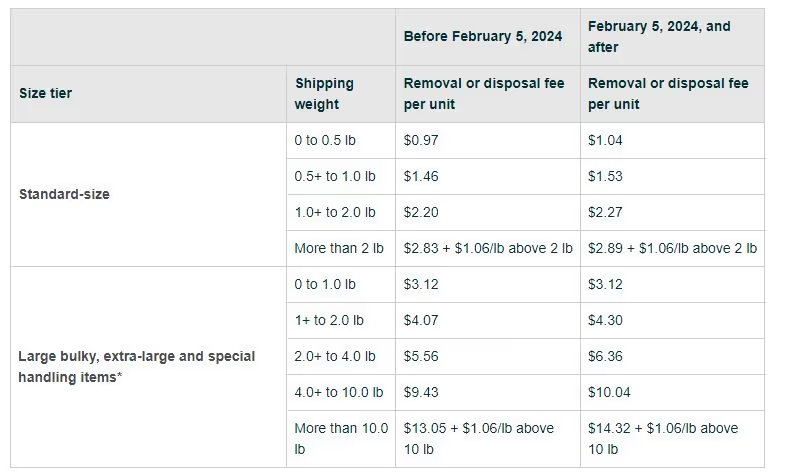
Related: Amazon ASIN, EAN, ISBN, and UPC Explained
What Is Amazon Dimensional Weight? How to Calculate It
Amazon Unfulfillable Inventory: Complete Guide
How to Calculate Amazon FBA Fees?
Amazon charges FBA sellers many different fees. It is vital to accurately account for all of them because they affect your product profitability, profit margin, and Return on Investment (ROI).
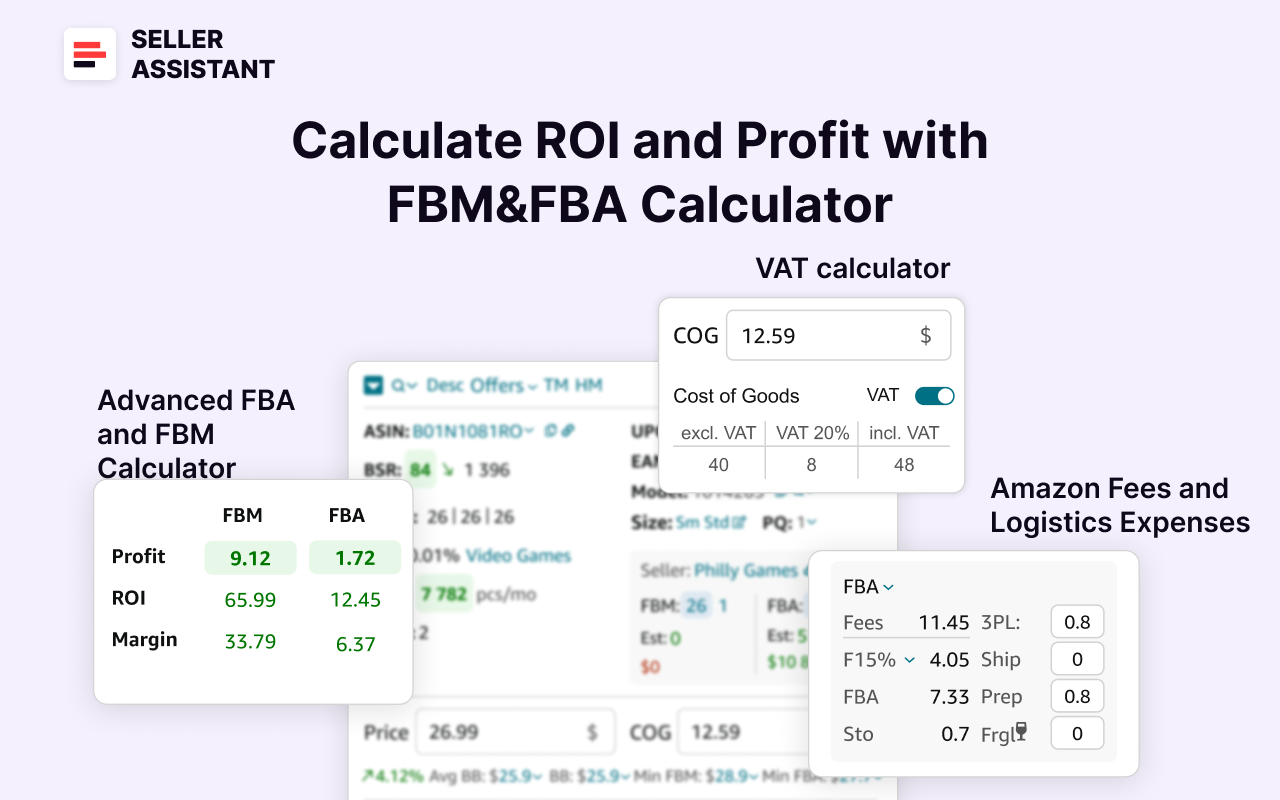
To do so, Amazon sellers use various Amazon fee calculators. One of the best Amazon profit calculators is Seller Assistant’s FBM&FBA calculator. It helps you quickly calculate all FBA fees and expenses right on the Amazon product page.
Seller Assistant is a powerful product sourcing platform that helps easily choose products to sell on Amazon. Seller Assistant App’s FBM&FBA calculator shows Amazon referral fees, FBA fees, and storage costs. You can add product preparation and shipping costs to your calculation. Costs for logistics can be configured in the settings.

FBM&FBA calculator also allows you to select the inbound placement service type on the Amazon product page and conveniently calculate inbound placement service fees.
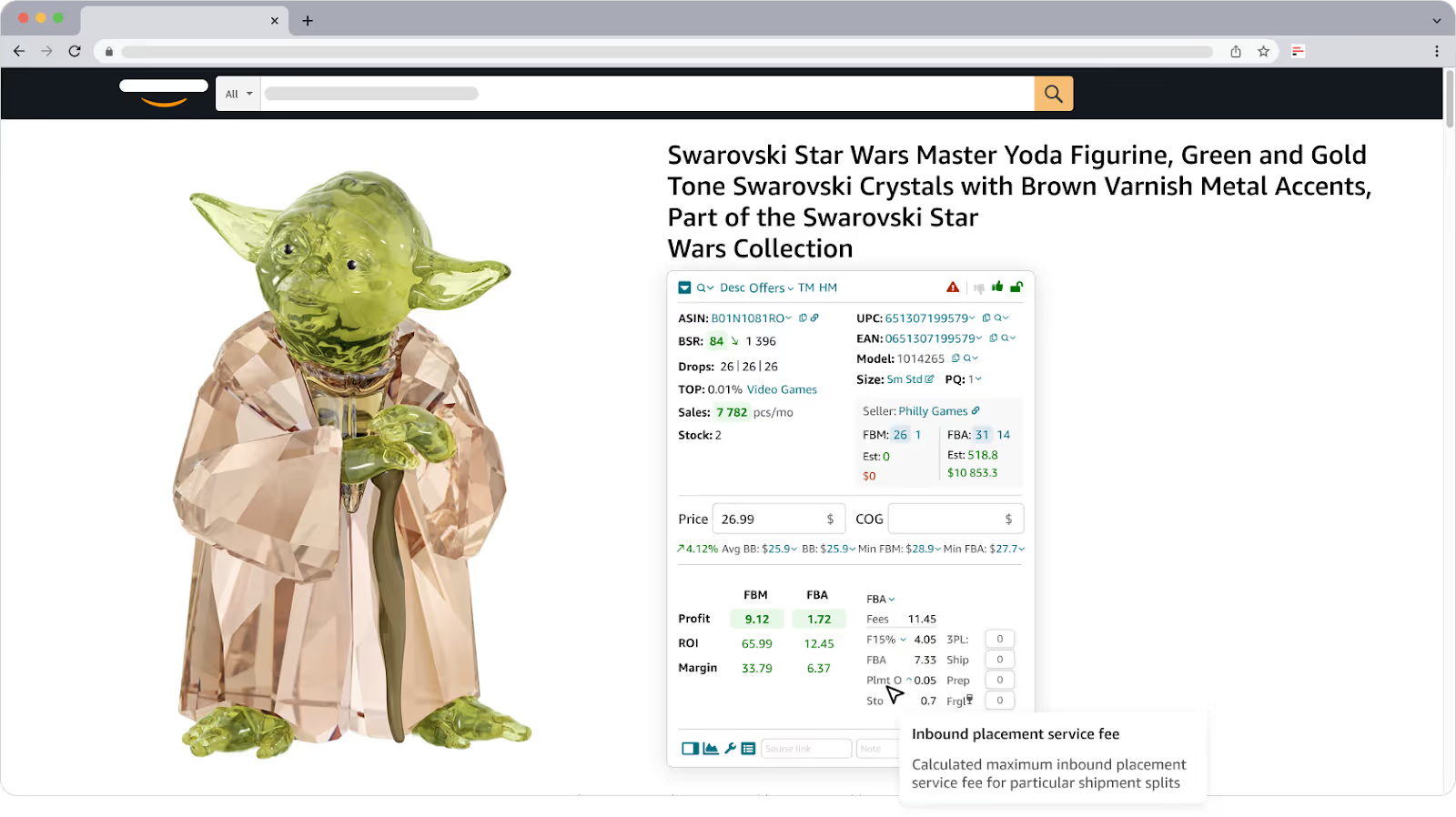
Related: What is Amazon FBA Stranded Inventory & How to Handle It
How To Sell On Amazon Without Inventory?
Amazon Pan-EU FBA Program - Ultimate Guide
FAQ
How much is Amazon FBA fee?
Amazon FBA fees depend on several factors, including product size, weight, and fulfillment center location. To get an accurate estimate of the fees for your specific product, you can use the Seller Assistant’s FBA&FBM Calculator tool
What is referral fee on Amazon FBA?
The referral fee on Amazon is a percentage of the total sales price you pay Amazon, regardless of using FBA. It typically starts at 15% but can vary by product category, ranging from 8% to 45%.
How to calculate FBA fees Amazon?
While there's no simple formula to directly calculate FBA fees, Amazon offers a free FBA fee calculator tool. However, you must input your product details. To do it quicker, and get an accurate estimate of the fees for your specific product, you can use the Seller Assistant’s FBA&FBM Calculator tool.
Where to find Amazon FBA pick and pack fee?
The "pick and pack" fee is now called the FBA fulfillment fee. You can find your estimated FBA fulfillment fee in the Fee Preview report in your Seller Central.
Final Thoughts
As an Amazon FBA seller, you pay many different fees that have complex structures. In addition to selling plan fees and referral fees paid by all Amazon sellers, FBA merchants pay fulfillment fees, storage fees, and other costs, like different surcharges and long-term storage fees.
To maintain healthy profit margins and ROI, you must thoroughly calculate all costs, including storage fees.
Seller Assistant helps Amazon sellers quickly find high-profit deals. It combines three extensions: Seller Assistant Browser Extension, and IP-Alert Chrome Extension by Seller Assistant, and VPN by Seller Assistant, Amazon seller tools: Price List Analyzer, Seller Spy, Bulk Restrictions Checker, and API integrations, and features: Side Panel View, FBM&FBA Profit Calculator, Quick View, ASIN Grabber, UPC/EAN to ASIN converter, Stock Checker, IP Alert, and Restrictions Checker.
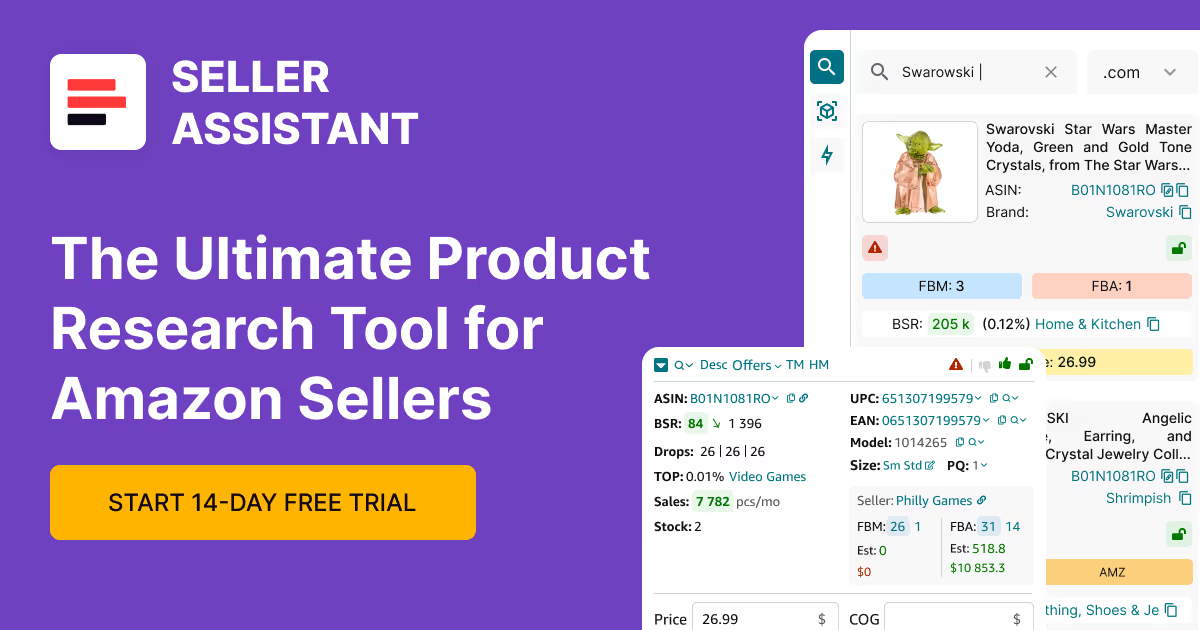
.svg)













